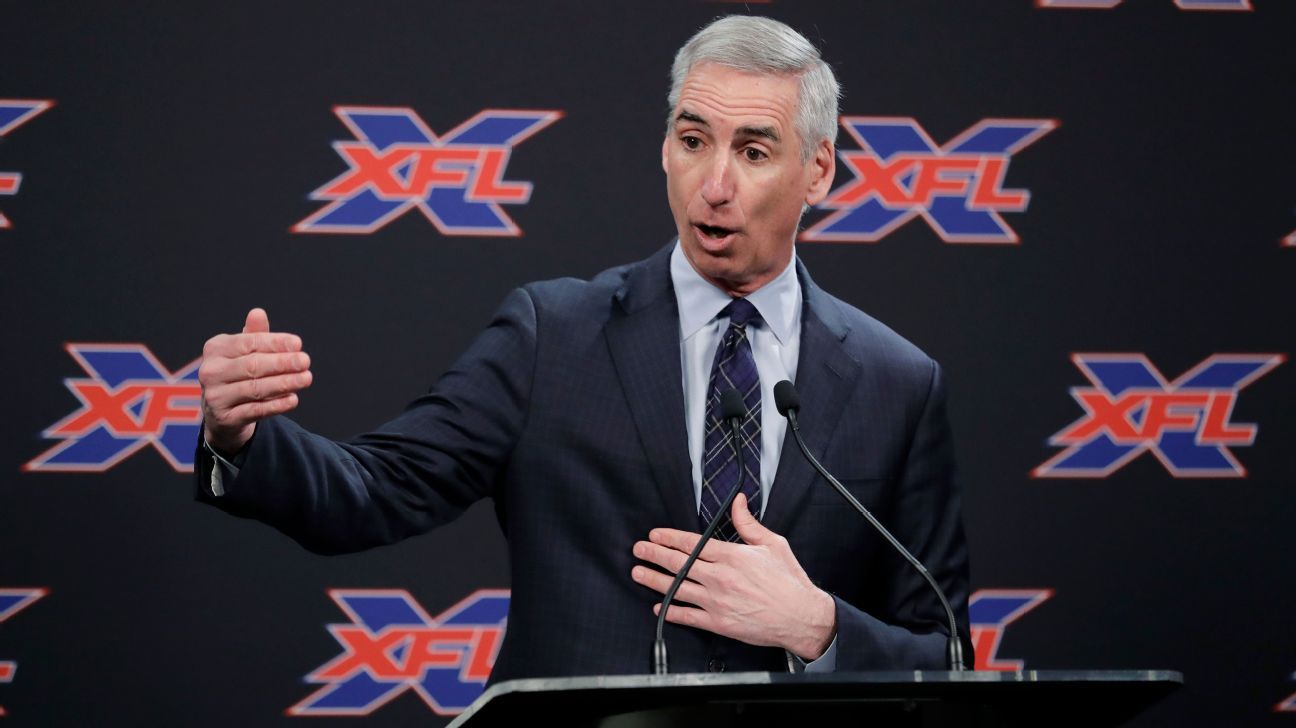Nort Spews
Well-known member
- Mar 16, 2019
- 127
- 1

8:26 AM ET
The XFL's official rulebook includes more than two dozen changes to the conventional approach of pro football, according to league officials who are rolling out the specifics this week.
Most of the tweaks, such as a running game clock and a three-tiered extra point, are focused on accelerating the pace of games and elevating interest in traditionally tedious plays.
"What we did is listen to fans," XFL commissioner Oliver Luck said. "And what they told us is that they love this game, but they would like it at a little more of a faster pace and with a little more excitement. They thought there is too much idle time. We tried to listen to what they didn't want, also. They didn't want gimmicks or things that were inauthentic. They also didn't want to be complicit when it comes to player safety. So what we wanted to do is take a great game and make it a little better."
The XFL's eight teams opened training camp this week and will kick off their 10-week regular season Feb. 8. Most of the on-the-field product will look familiar to fans, but a two-year project to innovate some aspects of the game led to a number of significant changes. They include:
A kickoff designed to discourage touchbacks and increase the likelihood of a return: The ball will be kicked off from the 30-yard line, but the coverage and blocking teams will line up at the receiving team's 35- and 30-yard lines, respectively. Only the kicker and returner can move until the ball is caught, or three seconds after it hits the ground. A touchback will be spotted at the 35-yard line. Kicks out of bounds will go to the 45-yard line.
Players can't leave the line of scrimmage on punts until after the kick. Any kicks that go into the end zone or out of bounds will be marked at the 35-yard line or wherever the ball went out of bounds, whichever is better for the receiving team. The idea is to discourage fair catches and "coffin corner" kicks, while providing more incentive to go for it on fourth down.
Three options after scoring a touchdown: a 1-point play from the 2-yard line, a 2-point play from the 3-yard line or a 3-point play from the 10-yard line. There is no option to kick an extra point.
A shootout-style overtime: Each team will get five single-play possessions from the 5-yard line. If the game is still tied at that point, the rotating possessions will continue until there is a winner. The XFL hopes that overtimes will be rare, in part because of the multiple options for points after touchdowns.
A rule that allows two forward passes on one play, providing the first doesn't go past the line of scrimmage. The purpose is to encourage creative trick plays without the risk of losing possession of a lateral or backward pass, which is a live ball if it hits the ground.
A requirement for only one foot to be in bounds for possession. XFL director of football operations Sam Schwartzstein said the change is easier to officiate quickly. It also is better for player safety, Schwartzstein said, because players take more unbraced falls while trying to place both feet in bounds.
A total of nine officials on the field, one of whom will be dedicated solely to spotting the ball to minimize down time between plays. XFL head of officiating Dean Blandino said most XFL officials have experience at the Division I college level. Blandino, the former NFL officiating chief, has been consulting with the XFL for more than a year. He performed a similar function for the Alliance of American Football (AAF) last spring.
A video official who can intervene on significant non-reviewable plays when involving player safety, or on any calls inside of five minutes remaining in the fourth quarter. There will also be booth-initiated reviews of traditionally reviewable plays using Hawk-Eye technology that ingests video directly from the broadcast truck.
Allowing offensive linemen to be up to 2 yards downfield when a pass is thrown, with the hope of minimizing flags on run-pass option plays.
A series of tweaks that the XFL hopes will cap game times at 2 hours, 45 minutes. (NFL games typically run about 3:06.) The tweaks include a running game clock that won't stop after incomplete passes or when players go out of bounds, except inside of two minutes in each half. Additionally, there will be a 10-minute halftime, two timeouts per team per half and no coin tosses. The home team will always make the choice to kick, receive or defer to start the game. The visitors will make that choice to start overtime.
